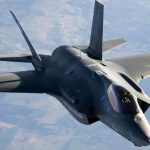No, the above headline is not based on a joke about President Trump’s eating habits.
Rather it is an example of how federal contracting practices create stunning examples of follow-up cost hikes that are likely beyond anything experienced in the real world outside of the Washington Beltway.
DefenseOne.com reports that the president’s jumbo jet, Air Force One, will soon be outfitted with two new massive refrigerators that will cost $24 million.
Experts say the reason isn’t price gouging by Boeing, which makes the unique jets and handles the substantial presidential modifications to the 747 plane, but instead the result of “bespoke” equipment requirements put in place by the White House Military Office and the Air Force. Bespoke is Washington-speak for custom modifications that are created from scratch, beyond the commercial market of products.
In keeping with past practices, Trump’s Air Force One stores thousands of meals in case of a national emergency.
The Defense One website offers this perspective:
The new refrigerators aren’t your kitchen Frigidaires, or even a typical jetliner’s cabin-feeding “coolboxes.” The requirement for Air Force One is the ability to feed passengers and crew for weeks without resupplying. That means storing about 3,000 meals in massive refrigerators and freezers below the passenger cabin. Five “chillers” cool a total of 26 climate-controlled compartments, according to the Air Force.
In December, the Air Force awarded Boeing a $23.7 million contract to replace just a small portion of the refrigeration equipment — two of the chillers, which cool eight compartments.
The refrigerators, and many other items on the aircraft, are so expensive because they are they are unique to Air Force One and not used on commercial or business jets. Many of the contractors that work on the presidential jet also must maintain high-level security clearances.
Even though the upgraded refrigerators use “available industry technology,” they are customized to carry 70 cubic feet of refrigerated storage space. The engineering required to design, manufacture, conduct environmental testing and obtain Federal Aviation Administration certification are included in the cost.





